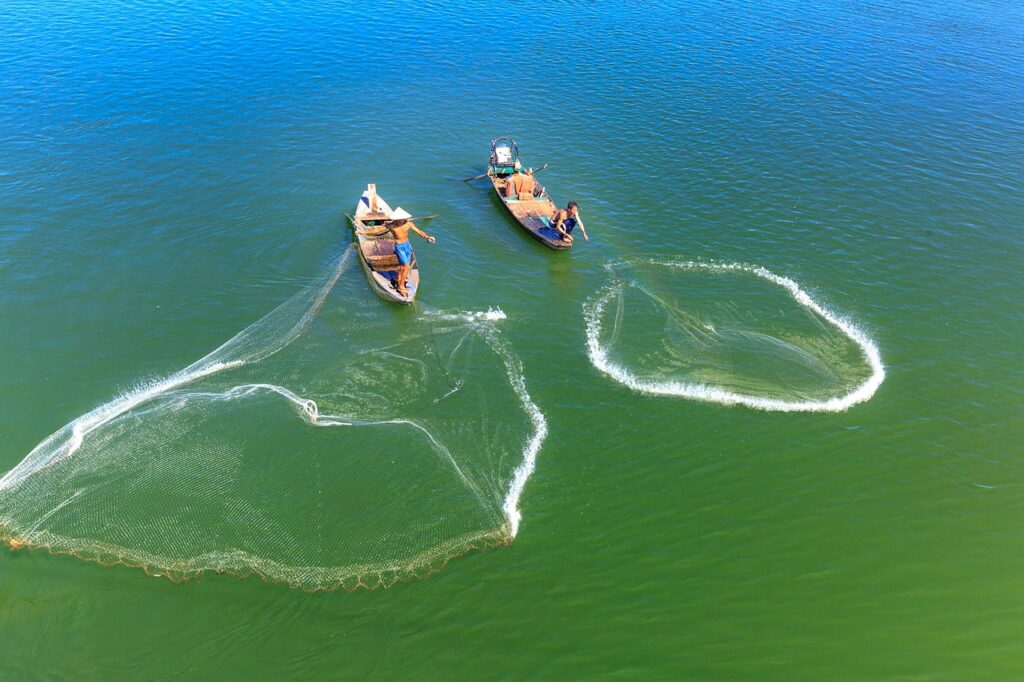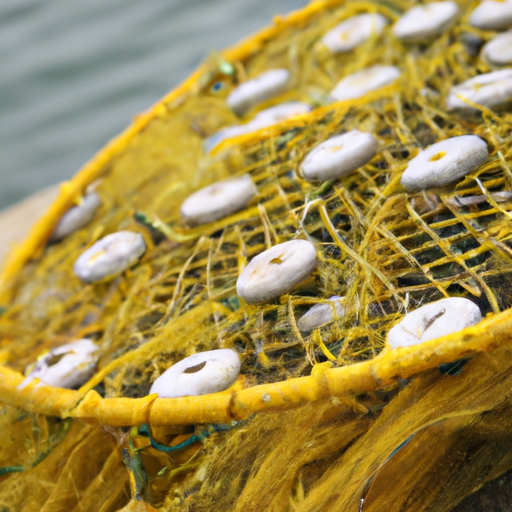Are you a fishing enthusiast looking to make a positive impact on the environment? Look no further! “A Guide to Sustainable Fishing Practices for Beginners” is here to help you navigate the world of fishing while minimizing harm to aquatic ecosystems. Whether you’re a novice angler or an experienced fisherman, this comprehensive guide provides valuable insights and tips on how to fish responsibly, conserve fish populations, and preserve our oceans for future generations. With this resource in hand, you’ll be equipped to embark on an ethical and sustainable fishing journey like never before.
What is Sustainable Fishing?
Understanding the Concept
Sustainable fishing refers to a method of fishing that aims to maintain fish populations and protect the marine environment for future generations. It involves fishing in a way that avoids depleting fish stocks and minimizes harm to other marine species and habitats. The concept of sustainable fishing recognizes the interconnectedness of all components of the ecosystem and aims to strike a balance between human needs and the needs of the environment.
Benefits of Sustainable Fishing
There are numerous benefits to practicing sustainable fishing. Firstly, it ensures the long-term viability of fish populations, which is essential for the livelihoods of fishermen and the food security of communities that rely on fish as a major source of protein. Sustainable fishing also helps maintain the overall health and biodiversity of marine ecosystems by minimizing the disruption of natural ecological processes.
Furthermore, sustainable fishing practices contribute to the preservation of habitats, such as coral reefs and seagrass beds, which are crucial for the survival and reproduction of various marine species. Sustainable fishing also reduces the amount of bycatch and discards, which are unintended catches or fish that are thrown back into the water due to size restrictions or other factors. By minimizing bycatch, sustainable fishing helps protect non-targeted species and reduces wastage.
Importance of Sustainable Fishing Practices
The importance of sustainable fishing practices cannot be overstated. Overfishing and the use of destructive fishing methods have led to the decline of several fish stocks and the degradation of marine ecosystems worldwide. By adopting sustainable fishing practices, we can mitigate the negative impacts of fishing and ensure the long-term viability of fish populations and marine ecosystems.
Sustainable fishing practices also contribute to the conservation of biodiversity, which is essential for maintaining healthy and resilient marine ecosystems. Furthermore, sustainable fishing practices provide economic opportunities for local communities, promote social well-being, and foster a sense of stewardship for the environment among fishermen and consumers alike.
Understanding Fish Populations and Ecosystems
The Role of Fish Populations
Fish populations play a vital role in maintaining the balance of marine ecosystems. They serve as important links in the food web, controlling the populations of smaller organisms and serving as a food source for larger predators. Additionally, fish populations contribute to nutrient cycling in marine ecosystems by excreting waste and decaying upon death, providing essential nutrients for other organisms.
Understanding the dynamics of fish populations is crucial for sustainable fishing. It involves monitoring fish stocks, studying reproductive patterns, and assessing the resilience of different species to fishing pressure. This knowledge allows fisheries managers to set appropriate catch limits and implement conservation measures to prevent overfishing and promote sustainable fishing practices.
Understanding Marine Ecosystems
Marine ecosystems are complex and diverse, consisting of various interconnected habitats and species. They include coral reefs, seagrass meadows, mangroves, kelp forests, and deep-sea ecosystems, each playing a unique role in supporting biodiversity and providing ecosystem services. These ecosystems are not only home to a wide range of fish species, but also serve as nursery grounds, breeding sites, and feeding grounds for many marine organisms.
To ensure sustainable fishing, it is essential to understand the functioning of marine ecosystems and the interactions between different species. This knowledge helps identify areas that require special protection, determine suitable fishing seasons, and implement ecosystem-based approaches that consider the broader ecological impacts of fishing activities.
Ecological Factors Affecting Fish Populations
Fish populations are influenced by a multitude of ecological factors. These include temperature, salinity, oxygen levels, food availability, and the presence of predators and competitors. Understanding how these factors affect fish populations is crucial for sustainable fishing practices.
Climate change, for example, can significantly impact fish populations by altering ocean temperatures and currents, affecting the distribution and abundance of different species. Changes in ocean chemistry, such as ocean acidification resulting from increased carbon dioxide levels in the atmosphere, can also have detrimental effects on fish populations and their ability to survive and reproduce.
By considering these ecological factors, fisheries managers can develop strategies to mitigate the impacts of environmental changes and ensure the sustainability of fish populations in the face of ongoing challenges.

Regulations and Guidelines for Sustainable Fishing
International Fishing Laws and Agreements
Sustainable fishing practices are supported by a range of international fishing laws and agreements. These global regulations provide a framework for conservation and the sustainable management of fish stocks in international waters. One notable example is the United Nations Convention on the Law of the Sea (UNCLOS), which establishes the rights and responsibilities of nations regarding the use of the world’s oceans.
Additionally, regional fisheries management organizations (RFMOs) have been established to promote cooperation among countries in managing shared fish stocks. These organizations set catch limits, regulate fishing gear and techniques, and monitor compliance with conservation measures. Examples include the International Commission for the Conservation of Atlantic Tunas (ICCAT) and the Western and Central Pacific Fisheries Commission (WCPFC).
National Fishing Regulations
In addition to international regulations, each country has its own set of fishing regulations to ensure sustainable fishing practices within its territorial waters. These regulations typically include licensing requirements, catch limits, and restrictions on gear and fishing methods. They are designed to prevent overfishing, protect sensitive habitats, and promote responsible fishing practices.
It is important for fishermen to familiarize themselves with the specific fishing regulations in their country or region. By adhering to these regulations, fishermen can help conserve fish populations and avoid potential fines or penalties for non-compliance.
Licensing and Permits
Many countries require fishermen to obtain fishing licenses or permits before engaging in commercial or recreational fishing. These licenses help regulate fishing activities by providing authorities with information about the number of fishermen operating in a given area and the species they are targeting.
Licensing and permit systems may also include restrictions on the size and type of fishing vessels, the duration of fishing seasons, and the areas where fishing is permitted. By implementing licensing and permit systems, fisheries authorities can control fishing pressure, monitor catch levels, and ensure that fishing activities are conducted in a sustainable manner.
Size and Catch Limits
One of the key measures to promote sustainable fishing is the establishment of size and catch limits for different fish species. Size limits specify the minimum size at which a fish can be retained, allowing smaller individuals to reach reproductive age and contribute to population growth. Catch limits, on the other hand, determine the maximum number of fish that can be harvested from a particular population within a given time frame.
Size and catch limits are based on scientific assessments of fish populations and are set to prevent overfishing and ensure the long-term sustainability of fish stocks. By complying with these limits, fishermen can help prevent the depletion of fish populations and contribute to the overall health and resilience of marine ecosystems.
Fishing Gear and Techniques
Selecting Sustainable Fishing Gear
The choice of fishing gear and techniques has a significant impact on the sustainability of fishing practices. Some fishing gear types, such as bottom trawls and gillnets, are known to cause habitat destruction and result in high levels of bycatch. These methods can have detrimental effects on marine ecosystems and non-targeted species.
To practice sustainable fishing, it is important to select fishing gear that minimizes ecosystem impacts and reduces bycatch. Examples of sustainable fishing gear include hook and line, traps, and selective fishing nets. These gear types have lower levels of bycatch and are less damaging to habitats, making them more environmentally friendly choices.
Best Practices for Gear Usage
Using fishing gear in a responsible and sustainable manner is crucial for minimizing negative ecological impacts. This involves following best practices, such as using the appropriate gear for the target species, avoiding sensitive habitats, and properly maintaining gear to reduce the chances of entanglement or gear loss.
Additionally, fishermen should regularly check and inspect their gear to ensure it is in good working condition. Discarded or lost fishing gear, also known as ghost gear, can cause significant harm to marine life by entangling or trapping animals. By properly managing and disposing of fishing gear, fishermen can help prevent ghost gear and reduce its negative impacts on marine ecosystems.
Alternatives to Harmful Fishing Techniques
In recent years, there has been a growing interest in developing and promoting alternative fishing techniques that are more sustainable and environmentally friendly. These techniques include fish aggregating devices (FADs) that attract fish without harming the seabed, and fish traps that allow for the selective capture of target species while minimizing bycatch.
Additionally, the use of innovative technology, such as underwater cameras and acoustic monitoring systems, can help fishermen target specific fish species more accurately, reducing the need for excessive fishing effort. Exploring and adopting these alternatives to harmful fishing techniques can contribute to the overall sustainability of fishing practices.

Protecting Habitat and Biodiversity
Impact of Fishing on Habitats
Fishing activities can have significant impacts on seafloor habitats, such as coral reefs, seagrass beds, and kelp forests. Bottom trawling, for example, involves dragging a large net along the seafloor, which can destroy habitat structures, damage fragile corals, and disrupt the complex relationships between organisms.
To protect habitats from the adverse effects of fishing, it is important to implement measures that minimize contact with the seafloor. This can include using fishing gear that operates above the seabed, such as lines and pots, or imposing restrictions on the use of trawling in sensitive areas. By protecting habitats, we can safeguard the biodiversity and ecological functions they provide.
Importance of Protecting Marine Biodiversity
Marine biodiversity is essential for the health and functioning of marine ecosystems. It encompasses the incredible variety of species, habitats, and genetic diversity found in the oceans. Protecting marine biodiversity is crucial for maintaining the resilience of marine ecosystems, enhancing the productivity of fish stocks, and promoting the overall health of the planet.
Sustainable fishing practices contribute to the protection of marine biodiversity by minimizing the depletion of fish populations, reducing habitat destruction, and decreasing the incidental capture of non-target species. By conserving marine biodiversity, we can enjoy the numerous benefits it provides, such as food security, tourism opportunities, and climate regulation.
Coral Reef Conservation
Coral reefs are among the most diverse and productive ecosystems on Earth. They support a wide range of marine life and provide essential services, such as coastal protection, nutrient cycling, and carbon sequestration. However, coral reefs are facing numerous threats, including overfishing, pollution, and climate change.
To ensure the sustainability of coral reefs and the fisheries they support, it is important to implement measures that protect these fragile ecosystems. This can include establishing marine protected areas (MPAs) where fishing is restricted or prohibited, promoting sustainable tourism practices, and reducing pollution from land-based sources. By conserving coral reefs, we can preserve their biodiversity and the many benefits they provide.
Protecting Fragile Ecosystems
In addition to coral reefs, there are other fragile ecosystems that require protection to ensure their long-term sustainability. Seagrass meadows, for example, are vital habitats for numerous fish species, providing nurseries, hiding places, and feeding grounds. However, they are susceptible to damage from boating activities and the use of destructive fishing gear.
By implementing measures to protect seagrass meadows, such as establishing no-anchor zones or promoting boating practices that minimize seafloor disturbance, we can ensure the health and productivity of these important ecosystems. Similarly, kelp forests, mangroves, and other fragile habitats also require conservation efforts to maintain their ecological functions and support sustainable fishing practices.
Responsible Catch Handling and Release
Proper Handling Techniques
Proper handling techniques are crucial for minimizing the stress and harm inflicted on fish during the catching and handling process. When capturing a fish, it is important to handle it with care and avoid causing unnecessary injury. This can be achieved by using appropriate fishing gear and landing the fish as quickly as possible to reduce exhaustion.
Once aboard the vessel, fish should be handled gently and kept in a cool and wet environment to prevent dehydration and maintain their quality. If the fish is not intended for immediate consumption, it is advisable to release it back into the water as quickly and safely as possible. Proper handling techniques help ensure the survival and well-being of released fish, contributing to the sustainability of fishing practices.
Reducing Bycatch and Discards
Bycatch refers to the unintentional capture of non-target species during fishing operations. It often includes juvenile fish, endangered species, and other marine organisms that are not intended for commercial or recreational purposes. Bycatch can have significant ecological and economic impacts, as it can lead to population declines in non-targeted species and result in wasted resources.
To reduce bycatch, fishermen can adopt various measures, such as using selective fishing gear, modifying fishing techniques, and avoiding areas with high bycatch rates. Additionally, the use of escape mechanisms, such as turtle excluder devices (TEDs) for trawl nets, can help prevent the incidental capture of protected species, allowing them to safely return to their natural habitat.
Safe Release Practices
When fish cannot be kept for consumption or sale, releasing them back into the water should be done in a way that maximizes their chances of survival. Safe release practices involve handling the fish carefully, minimizing the amount of time the fish spends out of the water, and releasing them in a location suitable for their species.
Releasing fish with care helps ensure that they recover quickly from the stress of capture and are able to resume their normal behavior. This is particularly important for species with low resilience or those that are heavily targeted by fishing activities. By promoting safe release practices, fishermen can contribute to the sustainability of fish populations and reduce unnecessary harm to marine life.

Sustainable Seafood Consumption
Conscious Consumer Choices
Consumers play a crucial role in promoting sustainable fishing practices through their choices and purchasing power. By making conscious choices when buying seafood, consumers can support well-managed fisheries and encourage the adoption of sustainable fishing practices.
When buying seafood, it is advisable to choose species that are known to be abundant and are harvested using sustainable methods. Consulting seafood guides and labels, which provide information about the sustainability of different fish species and the fisheries that catch them, can help consumers make informed decisions.
Consumers can also support sustainable fishing practices by reducing their seafood consumption, choosing plant-based alternatives, and diversifying their diet to include a variety of sustainably sourced seafood. By being mindful of their seafood choices, consumers can contribute to the long-term viability of fish populations and the marine environment.
Understanding Seafood Labels and Certifications
Understanding seafood labels and certifications is essential for making informed choices when buying seafood. Labels and certifications provide consumers with information about the origin, sustainability, and ecological impact of the seafood they are purchasing.
Certifications, such as the Marine Stewardship Council (MSC) or the Aquaculture Stewardship Council (ASC) labels, are awarded to fisheries and aquaculture operations that meet specific sustainability standards. These labels indicate that the seafood comes from well-managed sources and has been harvested or produced using environmentally friendly practices.
Consumers should look for seafood labeled with reputable certifications and choose products that align with their values and concerns. By supporting certified sustainable seafood, consumers can reward responsible fishing practices and encourage the adoption of sustainable methods throughout the seafood industry.
Supporting Sustainable Fishing Practices
Consumers can go beyond their purchasing choices and actively support sustainable fishing practices by engaging with organizations and initiatives that promote responsible fishing. Supporting conservation organizations, joining community-supported fisheries, and participating in seafood traceability programs are all ways to contribute to the sustainability of the seafood industry.
Consumers can also get involved in advocacy efforts, such as raising awareness about sustainable fishing practices, urging policymakers to implement stricter regulations, and supporting campaigns for the protection of marine ecosystems. By becoming informed advocates for sustainable fishing, consumers can help drive positive change in the industry and ensure a future of abundant fish populations and healthy oceans.
Community and Stakeholder Involvement
Engaging Local Communities
Engaging local communities is crucial for the success of sustainable fishing initiatives. The involvement of fishermen, coastal communities, and indigenous groups in decision-making processes helps ensure that fishing practices are culturally, socially, and economically viable.
By including local knowledge and traditional ecological practices in fisheries management, stakeholders can develop strategies that are compatible with the needs and values of the community. Additionally, the participation of local communities can enhance compliance with fishing regulations, as fishermen become more invested in the long-term sustainability of their fishing grounds.
Collaboration with Fishermen
Collaboration between scientists, policymakers, and fishermen is essential for the effective management of fish populations and the implementation of sustainable fishing practices. By recognizing the expertise and experience of fishermen, decision-makers can develop policies that are grounded in practical knowledge and are more likely to gain the support and cooperation of the fishing community.
Fishermen can also contribute to data collection efforts, such as reporting catch data or participating in citizen science programs. Their firsthand observations and insights can help improve stock assessments, enhance understanding of fish behavior, and inform adaptive management strategies.
Promoting Sustainable Practices through Education
Education and outreach programs are valuable tools for promoting sustainable fishing practices among fishermen, consumers, and the wider community. By providing training, workshops, and information sessions, stakeholders can raise awareness about the importance of sustainable fishing and instruct fishermen on best practices.
Educational initiatives can cover a wide range of topics, including responsible fishing techniques, the ecological impacts of fishing, and the benefits of long-term sustainability. By empowering stakeholders with knowledge and skills, we can foster a culture of responsible fishing and ensure the adoption of sustainable practices for future generations.
Awareness and Advocacy
Raising Awareness about Sustainable Fishing
Raising awareness about sustainable fishing is essential for inspiring positive change and encouraging people to adopt responsible fishing practices. This can be achieved through various means, such as media campaigns, educational materials, and community events.
By highlighting the importance of sustainable fishing practices and the impacts of overfishing, pollution, and habitat destruction, awareness campaigns can engage a wide audience and promote informed decision-making. Additionally, bringing attention to successful sustainable fishing initiatives and showcasing inspiring stories of fisheries recovery can inspire individuals and communities to take action.
Advocating for Policy Changes
Advocacy for policy changes is a powerful way to drive sustainable fishing practices at a systemic level. By advocating for stricter regulations on fishing methods, improved enforcement of fishing laws, and the establishment of marine protected areas, individuals and organizations can influence decision-makers and shape the future of fishing practices.
Advocacy efforts can involve lobbying government officials, supporting legislation that prioritizes sustainable fishing, and engaging in public consultations and hearings. Collaborating with like-minded organizations and individuals can amplify the impact of advocacy initiatives, helping to secure policy changes that benefit fish populations and marine ecosystems.
Supporting Conservation Organizations
Supporting conservation organizations is another way to contribute to the promotion of sustainable fishing practices. These organizations work tirelessly to protect marine biodiversity, advocate for sound fisheries management, and engage in research and conservation initiatives.
By donating to conservation organizations, volunteering for their programs, or becoming a member, individuals can provide vital support for the implementation of sustainable fishing practices. Conservation organizations also play a critical role in raising awareness, conducting research, and driving policy changes, making them key allies in the quest for sustainable fishing.
Case Studies and Success Stories
Examples of Successful Sustainable Fishing Initiatives
Numerous successful sustainable fishing initiatives have been implemented around the world, showcasing the positive impacts of responsible fishing practices. One such example is the Alaskan salmon fishery, which is managed using science-based strategies, strict catch limits, and fishing restrictions to ensure the sustainability of wild salmon populations.
Another success story is the recovery of the New Zealand snapper fishery, which experienced significant declines in the past but rebounded through the implementation of catch limits, habitat protection measures, and improved fishing practices.
These examples highlight the importance of comprehensive management approaches, the involvement of stakeholders, and the use of scientific evidence in achieving sustainable fishing outcomes. By learning from these success stories, we can replicate and adapt their strategies to other fisheries and contribute to the long-term viability of fish populations worldwide.
Inspiring Stories of Fisheries Recovery
In addition to specific sustainable fishing initiatives, there are inspiring stories of fisheries recovery that demonstrate the resilience of marine ecosystems and the potential for positive change. Some fish populations, such as the Atlantic cod off the coast of Newfoundland, have shown signs of recovery after years of overfishing and mismanagement.
These stories emphasize the importance of implementing conservation measures, investing in scientific research, and supporting sustainable fishing practices. They demonstrate that with proper management and the dedication of stakeholders, fish populations and marine ecosystems can recover from previous declines and provide sustainable resources for future generations.
Learning from Past Mistakes
Learning from past mistakes is crucial for moving towards more sustainable fishing practices. By examining historical examples of overfishing, habitat destruction, and ecological collapses, we can understand the consequences of unsustainable fishing and avoid repeating the same errors.
Some notable examples of past mistakes include the collapse of the Atlantic cod fishery off the coast of Canada and the severe depletion of bluefin tuna populations due to excessive fishing pressure. These stories highlight the need for precautionary management, adaptive approaches, and the recognition of the limits of fish populations and ecosystems.
By learning from past mistakes, we can develop informed policies and practices that prioritize sustainability and safeguard the future of our oceans.
In conclusion, sustainable fishing is a crucial practice that seeks to protect fish populations and marine ecosystems for future generations. Understanding the concept, appreciating the benefits, and recognizing the importance of sustainable fishing practices are the first steps towards creating a more sustainable fishing industry. By considering the role of fish populations, understanding marine ecosystems, complying with regulations, adopting sustainable gear and techniques, protecting habitats and biodiversity, engaging local communities, promoting responsible catch handling, consuming seafood sustainably, raising awareness, and learning from case studies and success stories, we can collectively work towards a more sustainable future for our oceans and ensure the long-term viability of fish populations. Through our individual actions and collective efforts, we have the power to create positive change and make a significant impact on the health and resilience of marine ecosystems.





